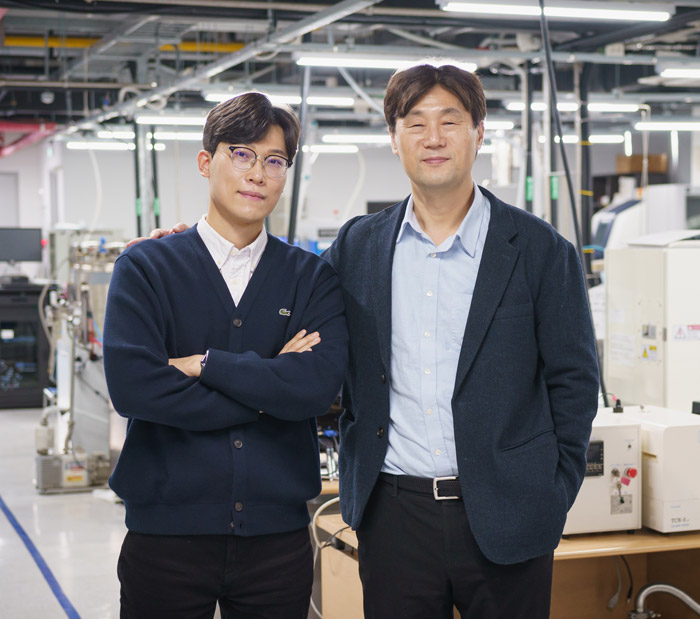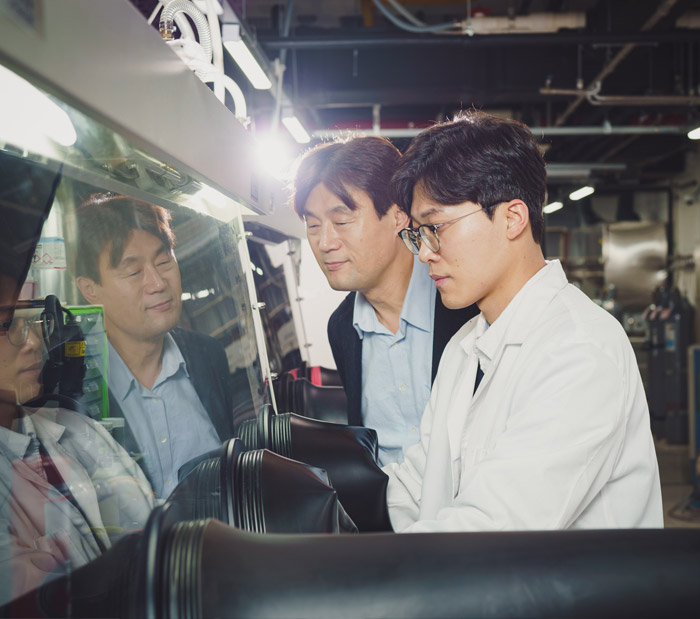Research Stories
Study on a High-Voltage Driven Nickel-Based Layered Cathode Material That Realizes High Energy Density
- The research team confirmed that the high-voltage driving design of low-content nickel (Ni)-based layered cathode material with high structural stability exhibits a superior lifespan and thermal stability compared to high-content nickel-based materials. Through this, the research team presents a new perspective and approach to the realization of high-energy rechargeable batteries. - Selected as the cover of the world-renowned academic journal ‘Advanced Energy Materials’
Energy Science
Prof.
YOON, WON SUB
Sungkyunkwan University (President Dong Ryeol Shin) announced that the research team has found that even a low Ni content material can have high energy, a long cycle life, and thermal stability depending on the operating condition.
With the declaration of carbon neutrality, the end of internal combustion engines that are based on fossil fuels is accelerating, and the era of electric vehicles is advancing. Accordingly, the high-content nickel layered cathode material attracts attention as a key material for lithium-ion secondary batteries for EVs for long-distance driving. However, as the nickel content increases, the amount of energy that can be stored increases, but due to the unique characteristics of the material that lower thermal stability, it is exposed to the risk of fire directly related to safety.
A research team at Sungkyunkwan University designed a battery driving condition at a high operating voltage for low nickel content material to the same discharge capacity as a material with high nickel content, and then investigated various structural, electrochemical, and thermal stability characteristics. In this research, it was confirmed that a material having a low nickel content has low anisotropic lattice distortion in an overcharge region and a lithium ion channel through which lithium ions move is better maintained. Moreover, it was observed that a low-content nickel material in a degraded state after a long-term life evaluation has less particle grinding and less micro-cracks along with uniform chemical state distribution in particles than a high-content nickel material.
In addition, through thermal decomposition mechanism analysis of materials, low-content nickel materials show better thermal stability despite higher voltage conditions than high-content nickel materials, proving a new possibility of designing lithium-ion secondary batteries with lower fire risk.
Through this work, depending on the design of the battery operating conditions, the research team demonstrated that a low-content Ni-based layered cathode material with high structural, chemical, and thermal stability can be an alternative to the high-content Ni-based layered cathode material. At the same time, the research team provided a rational strategy further to expand the design elements of lithium-ion secondary batteries.
Research professor Wontae Lee said, "Various energy storage materials are being researched and developed in the secondary battery field to ensure long-distance driving and safety. This research demonstrates competitive rechargeable batteries can be implemented by using existing materials through a strategic approach, leading to reconsideration of the research focus that was focused on the development of high-energy materials and provides an opportunity to diversity design factors of rechargeable batteries."
This study, conducted by, Researcher Mi-hee Jeong, Research Professor Wontae Lee and Professor Won-Sub Yoon, was selected as a back cover in 'Advanced Energy Materials', a world-renowned journal in the field of material science. (2022.02.24.)
[Figure 1] Comparison of crystal structure changes in accordance with lithium content of a low content and high content nickel-based layered structure material
[Figure 2] Chemical state distribution in particles after initial and after 400 charge-discharge times of a low-content and high-content nickel-based layered structure material
[Figure 3] Comparison of pyrolysis mechanisms of low-content and high-content nickel-based layered structures


